
11 minute read
Borne Again
The amber color of the sofa in the living room was drawn from the stained-glass windows. The end table is one of a pair that belonged to Robin’s grandmother and the lamp on the table is vintage. Midcentury modern style chairs were purchased in the Bywater. Pillows and coffee table through Logan Killen Interiors.

Church jokes and references pepper the conversation when Robin and Scott Borne talk about their MidCity house, which was once a Lutheran church. For instance, the couple affectionately call their residence the “Borne Again Church.” They moved the church’s altar to the existing back house (once the church rectory) where they use it as a bar when entertaining. There’s the strikingly appropriate coincidence that some of the furnishings came through their interior design team’s local store, which happens to be called the Sunday
Shop. There’s also the fact the church-turned-residence still receives mail that includes catalogs of clergy garments and supplies for Bible school. But far from denigrating the church’s history or the couple’s beautiful light-filled aery, the Bornes’ good-natured stories are shared in an effort to sing the building’s praises and explain how they took it from a dark, vacant space to an inspired, conversation-piece of a house.
The couple, who lived just four blocks away and love their
Mid-City neighborhood, had walked past the church countless times before ever viewing its interior. When they found it listed as a commercial property, they purchased it as is: carpeted in red; filled with pews, an altar and gorgeous stained glass; home to an outdoor full-immersion baptismal font, a separate rectory — now called the “Wrectory” and used as rental upstairs and party space downstairs — and a deacon’s cottage also used as a rental.
A two-year project from design to completion followed. The
Bornes hired architect Ken Gallen of Metro Studios, Brandon
Construction and interior designers Katie Logan LeBlanc and
Jensen Killen of Logan Killen Interiors.
“There wasn’t much to demo because it was a wide-open space,” says Robin. The church was originally built in the 1920s.
“Our vision was to create modern living in an old space and to keep the feel of the church and still make it a house. It’s a lofty space. We wanted it to feel grounded and not so high in the rafters; lighter, airier, more approachable and less severe.”
Gallen and Logan Killen shared the vision of respecting the origins of the structure, but also making it edgy and contemporary enough for a young, urban couple whose lives are steeped in music and a love of entertaining. Scott co-owns a record label called Sinking City Records and Robin, whose background is in restaurants, recently started a clean desserts business called Re-
Borne Bakery. The duo never misses a New Orleans Jazz & Heritage Festival, which is within walking distance, and often hosts visiting musicians.

Top: Millie reads at the top of the stairs that lead to the children’s play area and bedrooms. Bottom: Tropical wallpaper and a pendant light fixture in the powder room. Facing page: A loft space above the master bedroom houses Scott’s record collection. The gallery wall includes pieces by Hunt Slonem, Walter Sibly and Zack Smith.
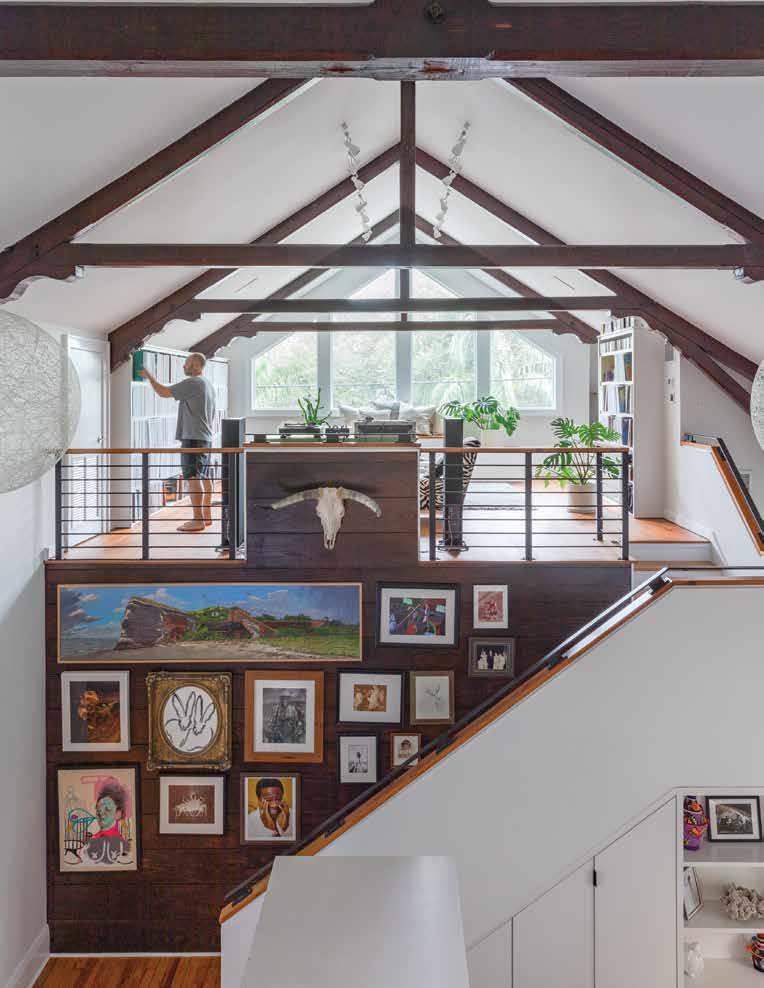


Top, left: The entry hall contains a pew from the former church. Top, right: Leafy, vintage-inspired wallpaper in Millie’s room. Custom headboard by Aaron Maras of Maras & Son Cabinetry. Bottom, left: The custom window seat in the record room was built by Brandon Construction, pillows by Logan Killen Interiors. Bottom, right: Curtains from Wren’s Tontine drape the windows behind the bed in the master bedroom. Leather chandelier from Eclectic Home, lamps from Fireside Antiques in Baton Rouge, pillows from Logan Killen. Facing page: Scott, Robin, George and Millie, with dogs Goldie and Wally on the screened porch.
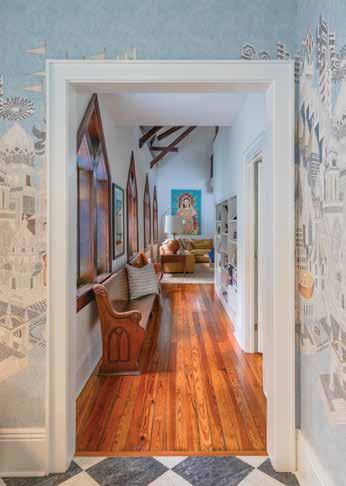


A wooden table that belonged to Robin’s mother was repurposed as a dining table and paired with repainted bentwood chairs from Robin’s mother’s high school cafeteria. Built-in cabinets divide the living and dining areas and provide storage. The kitchen is where the altar once stood. Painting in living room by Ashley Longshore.

The renovation called for turning the altar area into a sleek kitchen and camelbacking it with a second story loft that houses two bedrooms for the kids, 6-year-old Millie, and 4-yearold George. On the opposite end of the house, a second loft space was designed for Scott’s record collection and for hanging out. The record room accesses the original bell tower, now a screenedin porch where the family likes to take in the natural beauty of a full moon or of weather rolling in.
Dark beadboard near the ceiling was sheetrocked to lighten the space and the remaining wood was painted white to highlight the dark support beams of the double height ceiling. With help from Logan Killen, the couple then turned their attention to interior design.
The designers brought in appropriately scaled furnishings, took their color cues from the architecture and worked with the couple’s existing pieces. They drew the earthy amber of the sofa for example from the stained glass of the windows. They also had a table that had once been on Robin’s mother’s back porch sanded and lacquered for use as a dining table and paired it with repainted bentwood chairs from Robin’s mother’s high school cafeteria in Lockport.
Color and pattern were added with wallpapers (a Logan Killen trademark), tile work and art that the couple had collected, including an emoji-and-lipstick-emblazoned pop art image of Our Lady of Guadalupe by local artist Ashley Longshore. Jennifer Shorto’s Pink City wallpaper, a surreal cityscape featuring multicultural architecture and large oranges wraps the walls of the foyer like a mural and is complemented by a black-and-white marble tile floor.
In the children’s rooms, wallpapers take center stage. A blush, peach and chartreuse floral brings a vintage vibe to Millie’s, while a geometric insect-patterned paper was chosen to grow with George. Origami beetles (made out of photographs) from Martine Chaisson Gallery are placed on the wall outside of his door as if they’ve emerged from the wallpaper.
The overall effect is church-meets-urban loft: warm wood floors, rustic rafters and stainedglass rubbing elbows with industrial iron stair rails, modern cabinets and lighting, and contemporary art. Of course, there is the Bornes’ prolific church-related humor when describing the unique character of the house.
“I call the bathtub in the master bath, my Holy Water,” says Robin of the soaking tub that resides below a beautiful stained-glass window. “It’s my peaceful sanctuary.”
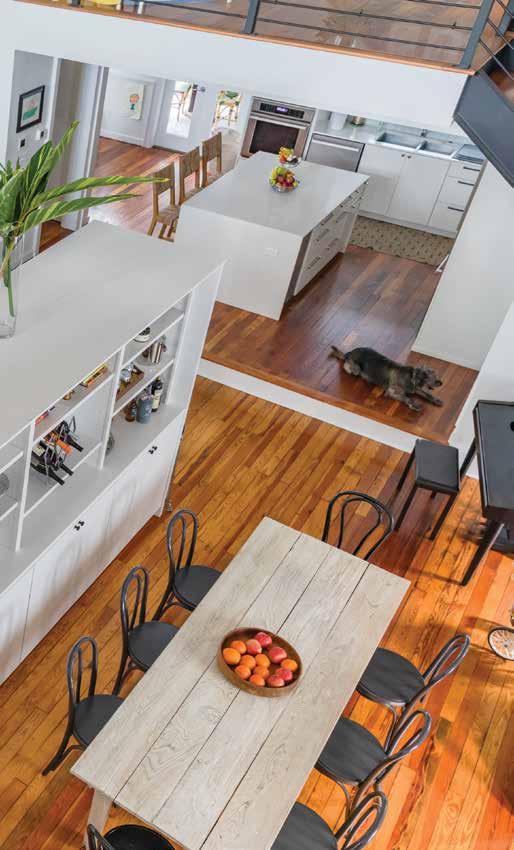
Demoran Custom Homes 504/810-5346, 985/788-7857, demorancustomhomes.com Campbell Cabinet Co. 220 Hord St., Harahan, 504/733-4687; 4040 Highway 59 Mandeville, 985/892-7713, campbellcabinets.com

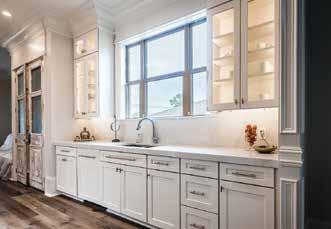
Doorman Designs 504/408-1616, DoormanDesigns.com Exterior Designs, Inc. Beverly Katz, APLD, Landscape Designer 504/866-0276, exteriordesignsbev.com


Classic Cupboards 5809 Ricer Oaks Road South, Harahan, 504/734-9088, classiccupboards.com Kelly Sutton Design LLC 3800 Dryades St., New Orleans, 310/975-4088, kellysuttoninc.com/contact



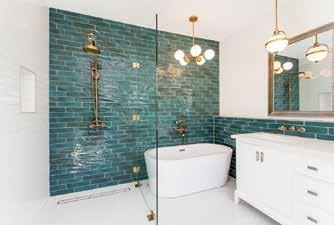
Tyson Construction 504/905-1042, Zach@Tyson-Construction.com Legend Interiors Kitchen & Bath • Design & Remodeling 432 N. Anthony St., Suite 301, New Orleans, 504/324.8080, info@legendinteriorsinc.com



M L M Incorporated 1400 Distributors Row, Elmwood, 504/322-7050, 985/231-0233, mlm-inc.com MULLIN 10356 River Road, St. Rose, 504/275-6617, mullinlandscape.com
Renaissance Doors LLC 1000 Edwards Ave Suite B, Harahan, 504/344-6994, renaissancedoorsllc.com Stafford Tile & Stone 5234 Magazine St., New Orleans, 504/895-5000, staffordtile.com

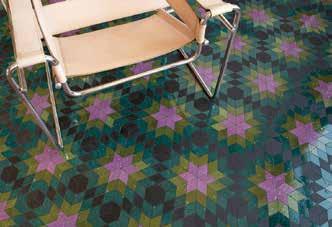


Abigail Reller Art 504/491-5675, abigailrellerart.com abigailrellerart@gmail.com Louisiana Custom Closets 13405 Seymour Meyer Suite 24, Covington, 985/871-0810, louisianacustomclosets.com Nordic Kitchen and Baths Inc. 1818 Veterans Blvd., Metairie, 504/888-2300, nordickitchens.com



Shotgun Design Group 4404 Saint Peter St., New Orleans, 504/233-4442 Fiber Seal 504/866-2273, fiberseal.com Ruffino Custom Closets 111 Campbell Blvd., Mandeville, 504/252-9884 985/809-7623, ruffinoclosets.com
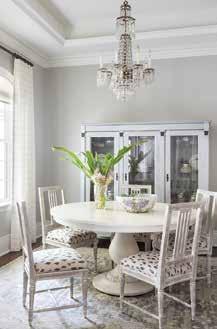

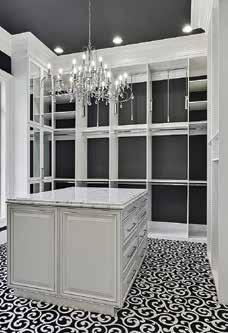
Palatial Stone and Tile, LLC. 1526 Religious St., New Orleans, 504/567-9000, 2052 Paxton St., Harvey, 504/340-2229, palatialstone.com Eclectic Home 8211 Oak St., New Orleans, 504/866-6654, eclectichome.net
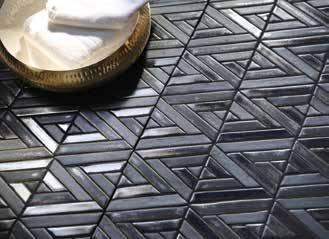


HOME CHECKLIST

Keep up with these items throughout the year to save on costly repairs
OWNING A HOUSE BRINGS WITH IT
many responsibilities. Some parts of upkeep and maintenance are easy to remember. For example, if you forget to mow your lawn, you’ll notice it when the grass becomes overgrown. But there are many things homeowners should remember to do on a regular basis that are all too easy to forget about in the hustle and bustle of our daily lives.
For at least a couple of nights every spring, New Orleanians are reminded that there are a lot of termites in the area when the flying insects swarm. The strong termite presence in the Crescent City is why homeowners should pay for an annual pest control and treatment.
“Termites can enter a home and sometimes only damage a small area, or if the problem persists and goes unchecked, they can literally eat through some or most of the wood inside the home from walls to ceiling joists to roof rafters. Lots of times you don’t find out [the damage is there] until it’s too late,” said Zachary Tyson, owner of Tyson Construction.
Tyson added that these repairs can sometimes cost tens of thousands of dollars. Hiring a professional to check your home for termites will only cost a few hundred dollars a year.
Machi Medrzycki, founder of MLM Incorporated, said one telltale warning sign of termite damage is mud trails up the support piers or the outer foundation of your house. These trails are often no wider than a pencil or straw.
New Orleanians don’t need to be told they live in a volatile weather climate. There is extreme heat and humidity, plus significant amounts of rain annually even if no tropical storms land in the area that year. Homeowners should get their roofs inspected by a licensed roofing contractor every five to 10 years.
“Sealing around roof penetrations, checking to make sure your roof and attic ventilation is working properly, along with sealing any exposed nails and securing shingles will help keep your roof in the best condition possible,” Tyson said.
If you’re adventurous enough to inspect your own roof, Medrzycki said one warning sign with roofing shingles is if they seem to glitter or sparkle in the sunlight. This means the shingles are losing lamination and will be easier to uplift during a storm.
Medrzycki said houses’ HVAC units should be serviced twice a year, once before the summer season taxes air conditioning units and once before the winter strains heating units. He added that air conditioning filters should be replaced every month. If filters aren’t replaced, dust can jam the air conditioner’s moving parts.
Tyson said you should inspect your windows and doors and any other area that might require caulking once a year. Updating weatherstripping around windows can seal out hot or cold air. Caulking windows and doors can prevent leaks, which can potentially save homeowners hundreds of dollars in repairs due to water damage.
Another important piece of regular maintenance is cleaning your gutters. If leaves, pine needles and other debris are allowed to clog gutters, the water can back up and seep into your house. Water damage from maintenance issues is not something a homeowner’s insurance will cover.
“It’s something a lot of people keep forgetting about,” Medrzycki said.
At the end of the day, Medrzycki said many homeowners forget to make these checkups because they’re not glamorous or exciting. Redoing a kitchen, a bathroom, or a living space can be fun and produce results you will see and appreciate every day in your home. However, many of the most important checkups are about issues that are either invisible or unnoticed. But they can cost homeowners a lot in money and headaches if ignored. “People want to spend money on stuff that’s pleasing to the eye,” Medrzycki said. “Aesthetic stuff should come second, but more often than not it doesn’t.”
– BY FRITZ ESKER


